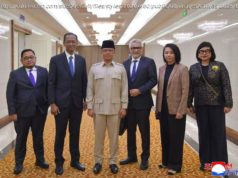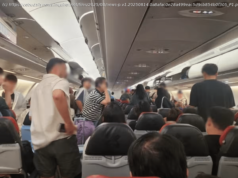Two skeletons dating to the 7th century have been excavated in South Korea from the base of castle’s walls. They are believed to have been buried in the foundation to protect the building
Two skeletons have been uncovered under the base of the walls of Wolseong Palace, also known as Moon Castle, in Gyeongju in South Korea.
The skeletons date back 1,400 years to the 7th century. They were found laying side be side with one looking upwards, and the other having his head turned to the partner.
“Judging from the fact that there are no signs of resistance when they were buried, they must have been buried when they were unconscious or dead, ” told Park Yoon-Jung, a senior researcher, to Phys.org .
Experts assume that the two people must have been buried as part of a ritual to please Gods who were believed would protect the construction from collapsing.
The practice of burying people under various constructions to ensure their endurance in South Korea is called “ Inju “. But until this recent discovery the knowledge of such practice has only been considered as a folklore, according to Nature World News.
Scientists will be performing a DNA test on the remains of the skeletons to find out more about the individuals, Daily Mail reports.
All what is known so far about the deceased pair is that they must have been the inhabitants of the Silla Kingdom.
The Silla Kingdom occupied the territory of both North and South Korea, and lasted from 57 B. C. to 935 A. D. ranking as one of the world’s longest dynasty in power .
Human sacrifices and alive burials were common to many civilizations in the past. The Egyptians, for example, used to bury Pharaoh’s slaves with him so that they could serve him in the after-life.
However, there was no evidence of any sort of sacrifice in the Silla Kingdom even though sacrifices were conducted in the neighbouring China.
Some experts remain skeptical that this discovery is a sign of a sacrifice. Choi Byung-hyun, a professor emeritus of archaeology at Soongsil University, says it is to soon to judge the discovery as a human sacrifice in South Korea, Smithsonian reports.






